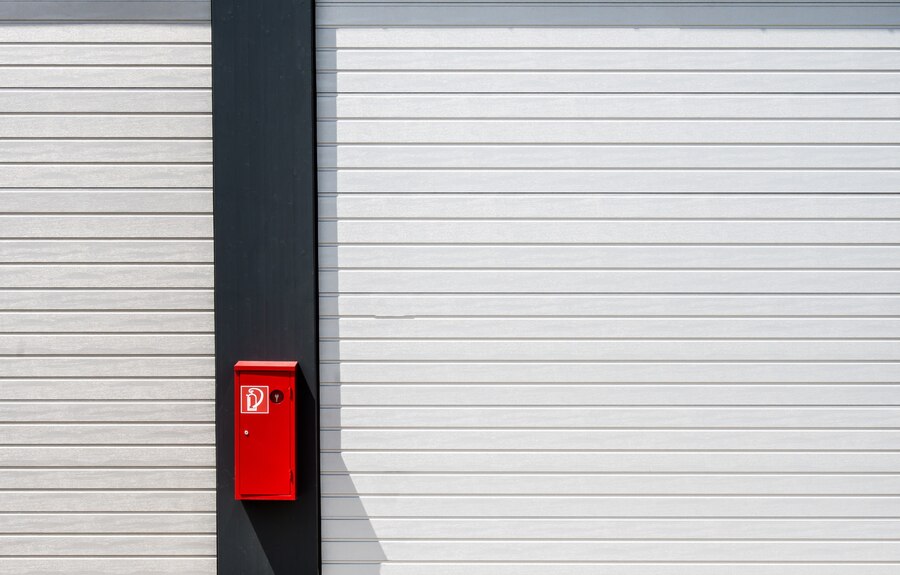How To Safely Use The Emergency Release On Your Garage Door
In moments of crisis, understanding how to use the emergency release on your garage door safely can be crucial. Whether it’s a power outage, mechanical failure, or an accident trapping your vehicle, knowing how to operate this feature effectively can prevent inconvenience and ensure your safety. This blog aims to provide a concise guide on navigating the emergency release mechanism, emphasizing the importance of preventive measures and proper usage. By familiarizing yourself with these procedures, you’ll be more capable of managing unforeseen circumstances and preserving the operation of your garage door system.
What Is The Emergency Release?
The emergency release on a garage door is a crucial safety feature designed to manually disengage the door from the automatic opener in case of power outages or mechanical failures. Typically consisting of a release handle or cord, this mechanism allows you to disconnect the door from the opener’s drive system, enabling manual operation.
By activating the emergency release, you can manually open or close the garage door, providing an essential means of access or egress during emergencies. Understanding how the emergency release works and where to locate it on your garage door model is fundamental to ensuring your ability to operate the door safely in adverse situations.
Precautions And Safety Measures
Before utilizing the emergency release on your garage door, it’s crucial to prioritize safety measures to prevent accidents or damage to the door system. By following these precautions, you can ensure a smooth and secure operation of the emergency release mechanism:
- Read the garage door manual thoroughly: Take the time to thoroughly review the manufacturer’s instructions and safety guidelines provided in the garage door manual. Understanding the specific procedures and recommendations for your particular garage door model is essential for the safe and effective operation of the emergency release mechanism.
- Identify the emergency release mechanism: Familiarize yourself with the location of the emergency release handle or cord on your garage door system. It’s typically situated near the garage door opener motor or along the track. Knowing its exact placement ensures quick access in emergencies, facilitating timely response when needed most.
- Conduct regular maintenance checks: Make it a habit to inspect the garage door system periodically to spot any indications of deterioration, wear, or malfunction. Please pay particular attention to the condition of the emergency release mechanism, ensuring that it is in proper working order and free from obstructions. Promptly addressing any issues discovered during maintenance checks can prevent complications during emergencies.
- Keep the area around the garage door clear: Proactively remove any objects or obstacles that may obstruct the garage door’s path when using the emergency release. Clearing the surrounding area minimizes the risk of accidents or damage to property during manual operation, fostering a safer environment for both people and belongings.
- Educate household members: Take the initiative to educate all members of your household about the location and proper usage of the emergency release mechanism. Provide clear and concise instructions on when and how to activate the emergency release, emphasizing the importance of caution and adherence to safety precautions to mitigate potential risks.
 Steps To Safely Use The Emergency Release
Steps To Safely Use The Emergency Release
When faced with an emergency requiring manual garage door operation, knowing how to use the emergency release safely is essential. Following these steps can help ensure a smooth and secure operation of the mechanism:
- Clearing the area around the garage door: Before engaging the emergency release, take the time to remove any obstacles or debris from the vicinity of the garage door. Clearing the area helps prevent accidents or damage to property during manual operation and ensures a safe environment for maneuvering the door.
- Locating and identifying the emergency release handle: Familiarize yourself with the location of the emergency release handle or cord on your garage door system. It’s typically located near the garage door opener motor or along the track. Knowing where to find the emergency release ensures quick access when needed, facilitating a timely response to emergencies.
- Step-by-step guide on using the emergency release: In situations where power is lost or the automatic opener malfunctions, knowing how to safely use the emergency release on your garage door is crucial. This step-by-step guide provides clear instructions for activating the emergency release mechanism to operate the door when necessary manually.
- Pull the release handle: Once you’ve located the emergency release mechanism, firmly grasp the handle or cord and pull it in the direction indicated by the manufacturer’s instructions. This action disengages the garage door from the automatic opener, allowing for manual operation.
- Manually open or close the garage door: With the emergency release activated, manually lift or lower the garage door to the desired position. Exercise caution and use proper lifting techniques to avoid strain or injury during this process.
- Returning the garage door to automatic mode: After completing the necessary manual operation, re-engage the garage door with the automatic opener by following the reverse procedure outlined in the manufacturer’s instructions. This typically involves pulling the release handle back into its original position or pressing a button to reset the mechanism.
By following these steps carefully and attentively, you can safely use the emergency release on your garage door when needed, ensuring both your safety and the integrity of your door system.
Common Mistakes To Avoid
To ensure the safe and effective operation of the emergency release on your garage door, it’s essential to be aware of common mistakes that should be avoided. By understanding these pitfalls, you can prevent accidents and damage to your door system:
Pulling the emergency release handle without proper cause
One common mistake is unnecessarily pulling the emergency release handle, such as during routine maintenance or when the door is functioning correctly. Doing so can disrupt the automatic operation of the garage door and may lead to complications if the door is inadvertently opened or closed manually.
Failure to secure the garage door after manual operation
Another mistake must be addressed: properly secure the garage door after using the emergency release to manually open or close it. Failing to re-engage the door with the automatic opener can leave it vulnerable to unauthorized access or potential safety hazards, compromising the security of your property.
Overlooking routine maintenance and checks
Another standard error is paying attention to regular maintenance and inspection of the emergency release mechanism. Without proper upkeep, the emergency release may become jammed, corroded, or otherwise impaired, reducing its effectiveness during emergencies. Performing routine checks and maintenance helps ensure the reliable operation of the emergency release and the overall functionality of the garage door system.
Troubleshooting Tips
When faced with issues related to the emergency release mechanism on your garage door, troubleshooting can help identify and resolve the problem efficiently. By following these tips, you can address common concerns and guarantee that the emergency release is operating correctly:
- Check for obstructions: Begin troubleshooting by inspecting the area around the emergency release mechanism for any obstructions or debris that may be impeding its operation. Clearing away any obstacles can help restore smooth functionality and prevent further complications.
- Verify power supply: Ensure there is power to the garage door opener by checking the electrical connection and circuit breaker. A power outage or electrical malfunction may prevent the automatic opener from functioning correctly, necessitating the emergency release.
- Examine the release mechanism: Inspect the emergency release handle or cord for any signs of damage, corrosion, or misalignment. If the mechanism appears worn or compromised in an emergency, it could be replaced or repaired to regain functionality.
- Lubricate moving parts: Apply lubricant to the moving parts of the emergency release mechanism, including the handle, release lever, and tracks. Lubrication helps reduce friction and ensures smooth operation, preventing sticking or jamming that could hinder the functionality of the emergency release.
- Consult the manufacturer’s instructions: Refer to the garage door manual for troubleshooting guidance specific to your model. Manufacturers often provide troubleshooting tips and charts to help identify and resolve common issues with the emergency release mechanism, ensuring optimal performance and safety.
Additional Safety Recommendations
In addition to understanding how to safely operate the emergency release on your garage door, several additional safety recommendations should be considered. First, educating family members and household occupants about the emergency release mechanism and its proper usage is essential. Ensuring everyone knows how to activate the emergency release in an emergency can enhance overall safety awareness and preparedness.
Furthermore, keeping emergency contact information readily accessible near the garage door can facilitate quick communication in urgent situations. Additionally, consider installing additional safety features, such as motion sensors or keypad entry systems, to enhance security and prevent unauthorized access. Regularly reviewing and practicing emergency procedures with your household members can also help reinforce safety protocols and ensure readiness during critical moments.
Conclusion
Understanding how to use the emergency release on your garage door safely is paramount for ensuring both convenience and safety in emergencies. By following the steps outlined in this guide and avoiding common mistakes, you can confidently navigate the operation of the emergency release mechanism.
Remember to prioritize regular maintenance checks and educate household members about proper usage. By implementing these precautions and recommendations, you can maintain a secure and functional garage door system, providing you and your family peace of mind in any unforeseen circumstances. Stay vigilant, stay informed, and prioritize safety at all times.


 Steps To Safely Use The Emergency Release
Steps To Safely Use The Emergency Release